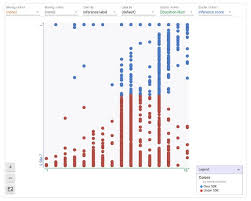Source: cbronline.com
Google Cloud Platform (GCP) has integrated two of its AI-centric tools. The move connects the “What-If” tool, announced last year, with GCP’s AI Platform: the company’s code-based data science development environment.
What-If is an AI/ML model visualisation tool that lets data scientists and other users analyse how an ML model would perform if you tweaked various data points, without writing code. The integration lets users run What-If on TensorFlow, XGBoost and Scikit Learn models deployed on AI Platform.
With What-If users can test the performance of two different AI models simultaneously on the same dataset. This allows for a high degree of contrast and compare, in which individual datapoints or entire dataset slices can be examined.
With the visualisation tool and ‘Facets Dive’ function an AI model’s performance on a dataset can be contrasted against another model, or the user can inspect a single model’s performance by grouping inference results into scatterplots, histograms and confusion matrices.
The tool also allows you to edit a datapoint by adding or removing features so you can run robust tests on the AI model’s performance.
Sara Robinson Developer Advocate, Google Cloud Platform commented in a blog that: “You can slice your dataset by features and compare performance across those slices, identifying subsets of data on which your model performs best or worst, which can be very helpful for ML fairness investigations.”
What-If AI Toolset Visualisation
The visualisation aspect of the tool may be the biggest draw for users as it could potentially lend an extra hand in explaining what you are doing to investors or the boardroom in accessible, coloured datapoints.
Initially viewed through the Datapoint Editor, users can alter features to affect the dataset and the model as whole, these changes are then visualised in a panel on the right.
James Wexler Software Engineer at Google notes: “You can change anything about the datapoint and run it again through the model to see how the changes affect prediction. The main panel can be organized into custom visualizations (confusion matrices, scatter plots, histograms, and more) using the dropdown menus at the top.”
In addition to TensorFlow models, you can also use the What-If Tool for your XGBoost and Scikit Learn models deployed on AI Platform. The programme only works with AI models that have been deployed within Google’s Cloud AI Platform.


